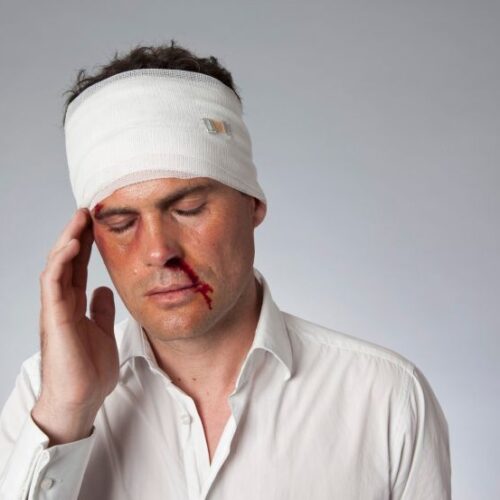Sculpt Sublime - Plastic Surgery Clinic in Mumbai

The Nature Of Maxillofacial Trauma
Numerous events, including car accidents, unintentional falls, sports injuries, acts of interpersonal violence, and workplace mishaps, can result in face trauma. Dental injuries to highly serious damage to the skin and bones of the face are all examples of facial injuries. Typically, facial injuries are categorised as either soft tissue (skin and gums), bone (fractures), or particular region (injuries) injuries (such as the eyes, facial nerves, or the salivary glands).
Soft Tissue Injuries Of The Maxillofacial Region
Sutures are used to treat soft tissue wounds, such as lacerations, that occur on the face. Care is taken to check and treat damage to significant structures such facial nerves, salivary glands, and salivary ducts in addition to healing the injury in a way that produces the greatest cosmetic result feasible (or outflow channels). As a skilled oral and maxillofacial surgeon, Doctor is well-versed in identifying and managing all kinds of face lacerations.
Bone Injuries Of The Maxillofacial Region
The treatment for fractures in the face’s bones is quite similar to that for fractures in other sections of the body. Numerous variables, such as the fracture’s location, its severity, the patient’s age, and overall health, influence the type of treatment that should be used. When an arm or a leg is broken, a cast is frequently used to keep the bone stable and promote normal healing. Other methods of stabilising facial fractures have been developed because a cast cannot be applied to the face.
For some upper and/or lower jaw fractures, one therapeutic option is to wire the jaws together. The best way to treat and stabilise other forms of jaw fractures is through the surgical implantation of tiny plates and screws at the affected spot. This method of treatment frequently enables healing and gets rid of the necessity to wire the jaws together. This method of fixing a fracture is known as “rigid fixation.” Many patients’ recovery times have been significantly accelerated by the relatively recent development and widespread usage of rigid fixation, allowing them to resume normal function more quickly.
A careful and predictable approach should be taken while treating face fractures. More importantly, there should be little to no change in the patient’s face look. There is usually an effort to access the facial bones with the fewest possible incisions. The appropriate incisions are created using small, strategically positioned incisions that, whenever possible, conceal the scar that results.
Injuries To The Teeth & Surrounding Dental Structures
It is not uncommon for teeth to sustain isolated injuries, which may necessitate the assistance of several dental specialists. The treatment of supporting bone fractures and the replacement of missing or misplaced teeth are often handled by oral surgeons. One of several methods of splinting is used to treat these kinds of wounds (stabilizing by wiring or bonding teeth together). A tooth that has been knocked out should be put in milk or salt water. The likelihood that the tooth will survive depends on how quickly it is placed back into the dental socket.Therefore, the patient should schedule an appointment with a dentist or oral surgeon right away. Never try to wipe the tooth off because the ligament that keeps the tooth in the jaw is still attached and necessary for the tooth to be successfully replanted. Root canal therapy may be handled by other dental specialists like endodontists, and broken teeth may be fixed or rebuilt by restorative dentists. By injury, the treatment team varies. Dental implants are frequently used as tooth replacements when damaged teeth cannot be salvaged or repaired.
The proper treatment of facial injuries is now the realm of specialists who are well versed in the emergency care, acute treatment, long-term reconstruction, and rehabilitation of the patient.
FAQs
What is done in plastic surgery?
What is the difference between cosmetic and reconstructive surgery?
Cosmetic surgery is performed to reshape normal structures of the body in order to improve appearance and self-esteem. Cosmetic surgery is usually not covered by health insurance because it is elective.
Reconstructive surgery is performed on abnormal structures of the body caused by congenital defects, developmental abnormalities, trauma, infection, tumors or disease. In general, reconstructive surgery is performed to improve function, but may also be completed to approximate a normal appearance.
Reconstructive surgery is typically covered by most health insurance policies, although coverage for specific procedures and levels of coverage may vary greatly.
If I have Botox or Restylane, how often would I need to repeat the injections?
Botox lasts about three to four months, and the treatment can be repeated as needed. When it wears off, you will begin to notice increased muscle action and some reformation of the wrinkles. It appears that with repeated use, the effect of Botox becomes longer lasting.
Restylane injections last for about six months, and can also be repeated as needed.
How do I know what size breast implant is right for me?
The decision is based on a number of factors, including the patient’s desires, reasons for the surgery and overall health.
For example, are you doing it because you feel your breasts are too small relative to your body contour or are you unhappy with the size and firmness of your breasts following pregnancy, breastfeeding or major weight loss? Unevenness between the breasts can also be a motivating factor. Your surgeon can help you make the right decision during your pre-surgical appointment(s).